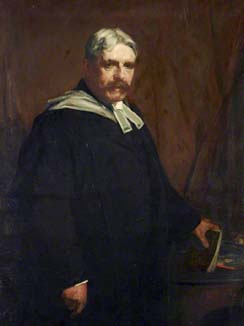


 تاريخ الرياضيات
تاريخ الرياضيات
 الرياضيات في الحضارات المختلفة
الرياضيات في الحضارات المختلفة 
 الرياضيات المتقطعة
الرياضيات المتقطعة
 الجبر
الجبر
 الهندسة
الهندسة 
 المعادلات التفاضلية و التكاملية
المعادلات التفاضلية و التكاملية 
 التحليل
التحليل
 علماء الرياضيات
علماء الرياضيات |
Read More
Date: 24-1-2017
Date: 5-2-2017
Date: 22-1-2017
|
Died: 18 November 1933 in Cambridge, England

Robert Scott's father was the Reverend George Scott, who for many years was Minister in the church at Dairsie, a village about 10 km from St Andrews. Robert's mother was Mary Forsyth, son of the Edinburgh advocate Robert Forsyth. He was his parents' eldest son. Robert Scott was educated at the High School, Edinburgh, then in Stuttgart before becoming a student at University College, London. In 1870, while a student at University College, London, he was awarded a Whitworth Exhibition.
From London, Scott entered St John's College, Cambridge where he studied the Mathematical Tripos. He was fourth Wrangler in the Tripos in 1875 and, two years later, was elected to a fellowship at St John's College. He was an Assistant Master at Christ's Hospital from 1877 to 1879 during which time he wrote his only mathematics book The theory of determinants and their applications which was published in February 1880. Scott's Preface reads:-
In the present treatise I have attempted to give an exposition of the Theory of Determinants and their more important applications. In every case where it was possible I have consulted the original works and memoirs on the subject; a list of those I have been able to see is appended as it may be useful to others pursuing the same line of study. At one time I hoped to make this list exhaustive, supplementing my own researches from the literary notices in foreign mathematical journals, but even with this aid I found that it would be necessarily incomplete. In consequence of this the list has been restricted to those memoirs which I have seen, the leading results of which are incorporated either in the body of the text or in the examples.
The principal novelty of the treatise lies in the systematic use of Grassmann's alternate units, by means of which the study of determinants is, I believe, much simplified.
I have to thank my friend Mr James Barnard, M.A. of St John's College and Mathematical Master at the Proprietary School, Blackheath, for the care he has bestowed on correcting the proofs and for many valuable suggestions.
Scott then studied law, becoming a Barrister in 1880, and a Bencher of Lincoln's Inn in 1922. He was Senior Bursar of St John's College from 1883 to 1908 when he was appointed as Master of St. John's College, Cambridge. Scott held this post for the rest of his life. He was also Vice-Chancellor of the University of Cambridge for the years 1910-12.
On 1 January 1904 a second paperback edition of Scott's book The theory of determinants and their applications was published. The book was revised for this second edition by G B Mathews and on the title page Scott is described as Robert Forsyth Scott, M.A., of Lincoln's Inn, Fellow of St John's College Cambridge. He also published History of St John's College (1907) and wrote many papers on College History. Scott's entry in Who's Who lists his recreations as: formerly rowing; antiquarian and biographical pursuits. It also list his club as the Athenaeum, and gives his address as The Master's Lodge, St John's College, Cambridge.



|
|
|
|
تفوقت في الاختبار على الجميع.. فاكهة "خارقة" في عالم التغذية
|
|
|
|
|
|
|
أمين عام أوبك: النفط الخام والغاز الطبيعي "هبة من الله"
|
|
|
|
|
|
|
المجمع العلمي ينظّم ندوة حوارية حول مفهوم العولمة الرقمية في بابل
|
|
|